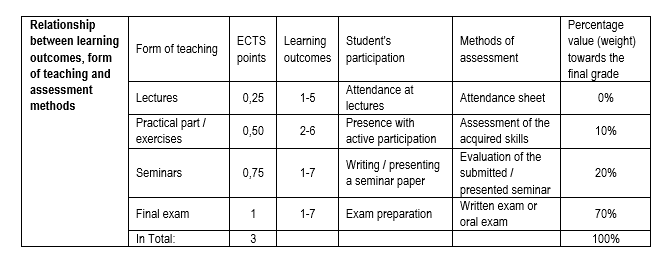The course Anatomy will be observed from a functional viewpoint with special emphasis on clinical anatomy of adults. In clinically significant fields students have to know the anatomy of children, youth and pregnant women. Students have to be qualified to find and identify anatomic structures on the thorax, abdomen and extremities they will encounter in their clinical work every day. Furthermore, they have to recognise clinically significant differences that could affect the determination of clinical diagnoses and treatment. They have to recognise the mechanics of joint movement on the extremities and understand their significance during a clinical check-up.
The course Anatomy will be observed from a functional viewpoint with special emphasis on clinical anatomy of adults. In clinically significant fields students have to know the anatomy of children, youth and pregnant women. Students have to be qualified to find and identify anatomic structures on the thorax, abdomen and extremities they will encounter in their clinical work every day. Furthermore, they have to recognise clinically significant differences that could affect the determination of clinical diagnoses and treatment. They have to recognise the mechanics of joint movement on the extremities and understand their significance during a clinical check-up.
Obavezna literatura:
- Havelka M, Havelka Meštrović A, ur. Zdravstvena psihologija: biopsihosocijalne odrednice zdravlja. Zagreb: Zdravstveno veleučilište Zagreb; 2013.
- Hudek-Knežević J, Kardum I. Psihosocijalne odrednice tjelesnog zdravlja: I. Stres i tjelesno zdravlje. Jastrebarsko: Naklada Slap; 2006.
Upon completion of this course, students will be able to:
- Describe, incorporate and give the critical review upon basic scientific understandings in stress biology and physiological human features;
- Explain mechanisms of reactive oxygen species and free radicals production in the metabolism as well as to explain their biological role in different health disorders;
- Recognize and explain the role of antioxidants in prevention and therapy;
- Explain action mechanisms of basic psychobiological relaxation techniques;
- Use properly basic biological terminology associated with the stress investigation;
- Recognize prerequisites for making proper scientific conclusions from analyzed scientific papers;
- Choose adequate methods and techniques for the investigation of the defined problem and for testing raised assumptions as well as to organize the investigation.



